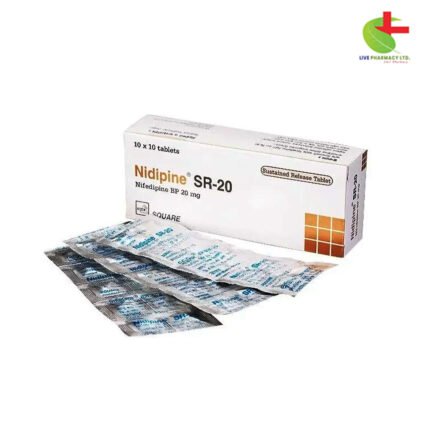Nimocal 30
50.00৳ Strip
- Specializing in neurological care
- Offering Nimodipine, a calcium channel blocker
- Aiming to enhance neurological outcomes
- Reducing severity of ischemic deficits in patients with subarachnoid hemorrhage from ruptured intracranial berry aneurysms, regardless of post-ictus neurological condition.
 Brand
Brand
|
Square Pharmaceuticals PLC |
|---|---|
 Generics
Generics
|
Nimodipine |
Indications
Nimodipine, utilized for enhancing neurological outcomes, works to minimize the occurrence and severity of ischemic deficits in individuals experiencing subarachnoid hemorrhage stemming from ruptured intracranial berry aneurysms, irrespective of their neurological condition following the event.
Pharmacology
As a calcium channel blocker, Nimodipine affects smooth muscle cells’ contractile processes, which rely on calcium ions for activation during depolarization. By impeding the transfer of calcium ions into these cells, Nimodipine prevents contractions of vascular smooth muscle. Its pronounced impact on cerebral arteries, likely due to its high lipophilicity enabling it to cross the blood-brain barrier, is evident, with concentrations detected in the cerebrospinal fluid of treated patients. Although the exact mechanism of action in subarachnoid hemorrhage remains unclear, clinical studies reveal its positive effect on alleviating neurological deficits resulting from cerebral vasospasm.
Nimodipine exhibits rapid absorption post-oral administration, with peak concentrations typically reached within an hour. While its terminal elimination half-life is around 8 to 9 hours, earlier elimination rates are much faster, necessitating frequent dosing every 4 hours. The drug is predominantly bound to plasma proteins and is primarily eliminated through metabolites, with minimal amounts excreted unchanged in urine. Bioavailability is notably increased in patients with hepatic cirrhosis, necessitating dosage adjustments.
Dosage & Administration
For adults, an initial dose of 60 mg is recommended every four hours for 21 consecutive days, preferably administered between meals. Commencement of oral Nimodipine therapy within 96 hours of subarachnoid hemorrhage is advised.
Interaction
Co-administration with strong CYP3A4 inducers may reduce plasma concentration and efficacy. Concurrent use with phenytoin may elevate serum levels and toxicity. Interaction with cimetidine or sodium valproate may increase plasma concentrations.
Contraindications
Avoid use within 1 month of myocardial infarction or an episode of unstable angina. Contraindicated with potent CYP3A4 inhibitors.
Side Effects
While side effects from Nimodipine are rare, possible adverse reactions include headache, dizziness, flushing, heartburn, gastrointestinal discomfort, and mood changes.
Pregnancy & Lactation
Animal studies indicate potential birth defects with large doses of Nimodipine, though human studies are lacking. Caution is advised during pregnancy and lactation.
Precautions & Warnings
Regular monitoring of blood pressure is recommended during treatment, especially in individuals with hepatic impairment. Dosage adjustments may be necessary in such cases.
Therapeutic Class
Nimodipine falls under the therapeutic category of calcium-channel blockers.
Storage Conditions
Store between 15-30°C, protecting from light efxposure.













Reviews
There are no reviews yet.